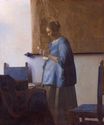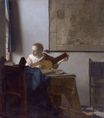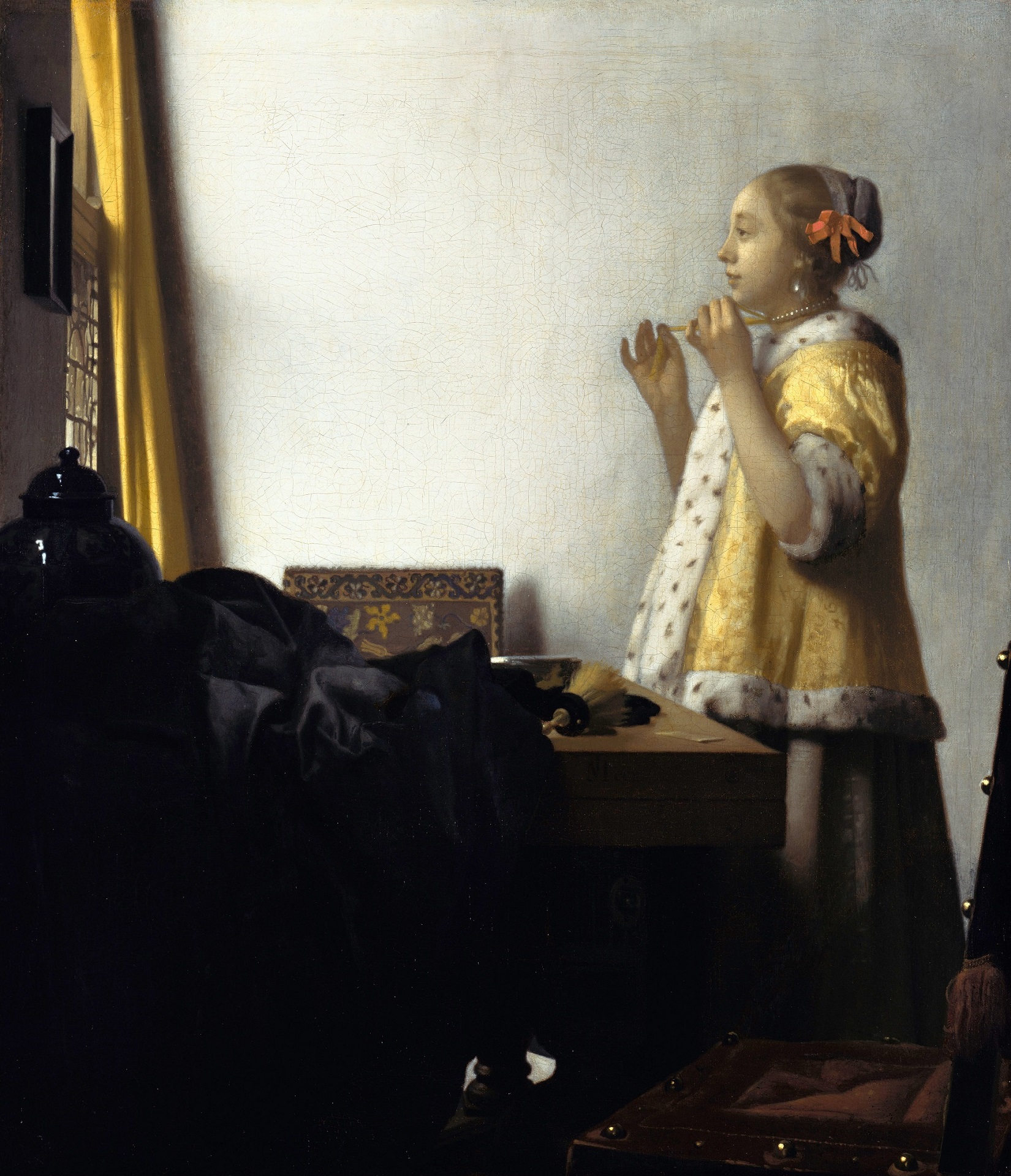Johannes Vermeer - Young Woman with a Pearl Necklace 1662
 |
 |
 |
 |
 |
 |
 |

Young Woman with a Pearl Necklace 1662
55x45cm oil/canvas
Gemäldegalerie, Berlin, Germany
The image is only being used for informational and educational purposes
<< Previous G a l l e r y Next >>
From Wikipedia, the free encyclopedia:
Painted in 1664, this 21 5/8 X 17 ¾ inch scene depicts a young Dutch woman looking left toward a window’s light source. Dressed in a yellow, fur-trimmed coat, this young woman most likely comes from an upper-class family. With Vermeer’s distinctive style, it incorporates the color yellow, a draped curtain, framed pictures on the walls, a light source from the left, as well as domestic tools, and an expressive profile.
For example, to the far left, a yellow, drawn back curtain is used. With a rich tone of lemon yellow to complete the woman’s jacket, Vermeer is able to create a balance between the two ends of his painting. The window that the curtain would cover is very similar to that in his painting, “The Woman with the Water Pitcher.”
On that same side of the wall, Vermeer displays a framed mirror. The black frame is most likely made of ebony, which indicates wealth and status. The fact that Vermeer uses a mirror is also distinctive. Vermeer associated the sense of reflection to portray the woman with vanity or feminine power. Also due to Vermeer’s interest in certain Greek muses, he used the mirror to portray duality. However, according to the Essential Vermeer Website, other historians believe this mirror may indicate a Dutch theme of vanitas or the reminder of death. However, there is not a specific way historians can determine this.
A large portion of the painting happened to be the white walls. This allows the painter to set a stage for his main subject, the young woman. Without any distraction on the wall behind her, the viewer can look more to the main figure's expression and actions. The young woman is definitely the most descriptive part of the piece. Like many of his other featured women, she is portrayed in a yellow, fur-trimmed morning coat. Comparing these trims, historians can investigate how Vermeer painted. From the microscopic brush strokes, historians can decipher many thin layers of gray and white, which reveal Vermeer's attempt to create realism. Like Vermeer, during the Baroque period many Dutch artists were striving for simple, clear, and natural realism. These coats also give historians a glimpse into the period. In the middle 1660s, many Dutch interiors were filled with a variety of furs. These pieces were commonly used during long Dutch winters. These styles of furs were actually recorded in Vermeer's home in 1676.
The woman’s facial expression is also telling. As she seems to be finishing up her morning routine, the young woman is caught clasping her pearl necklace together. Her facial expression stares blankly and almost vainly ahead of herself, possibly out the window or into the black-framed mirror. The woman retains a nice profile yet blank look. This three quarter pose was very common to the period and revealed a distinct quality of Dutch Baroque painting.
Another important aspect of Vermeer’s “Woman with Pearl Necklace” is the placement of the domestic tools on the table. A water basin, comb, and powder brush are all displayed on the table. This painting may suggest criticism towards a young upper class women’s frivolity, lack of occupation, and her ample time for petty activities.
Lastly, the deep blue tablecloth draped over the left side of the painting brings strong contrast to the work. Vermeer needed to create a contrast spot in order to maintain the geometric layout of the painting.